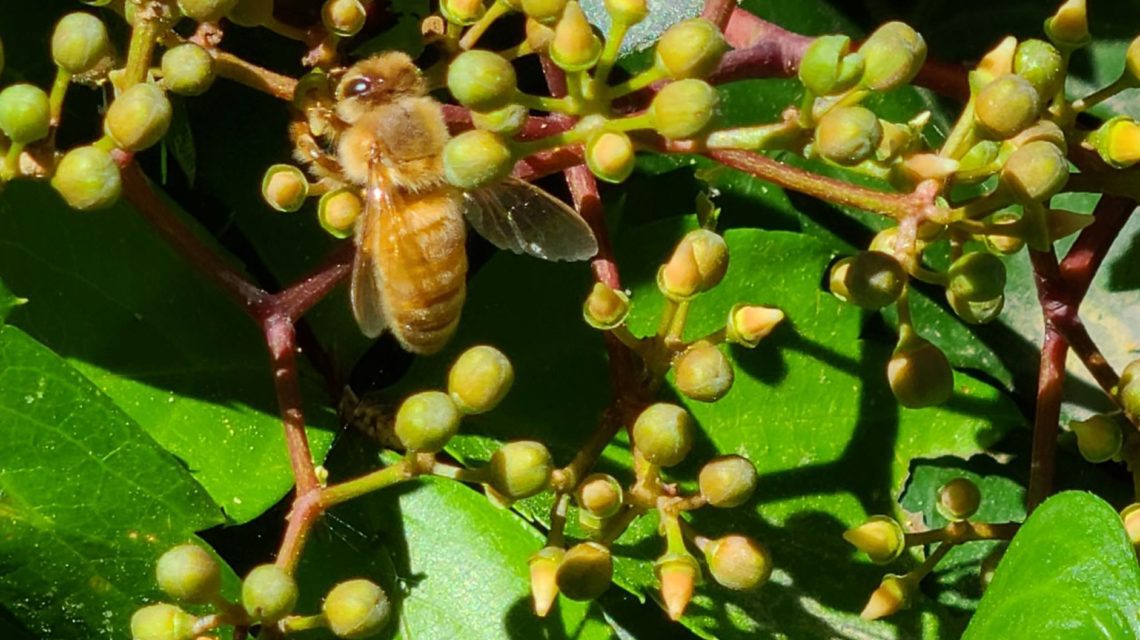It’s the season for bees and wasps! Unless you’re a beekeeper, you probably don’t want anything to do with them. For good reason too—those stings hurt! This year learn the differences between bees and wasps so you know who to call to get rid of them.
Jump to a Section:
- Honeybees
- Paper Wasps
- Bald-faced Hornets
- Yellowjackets
- Preventing Yellowjackets, Paper Wasps, and Hornets
Honeybees: Where Your Honey Comes From
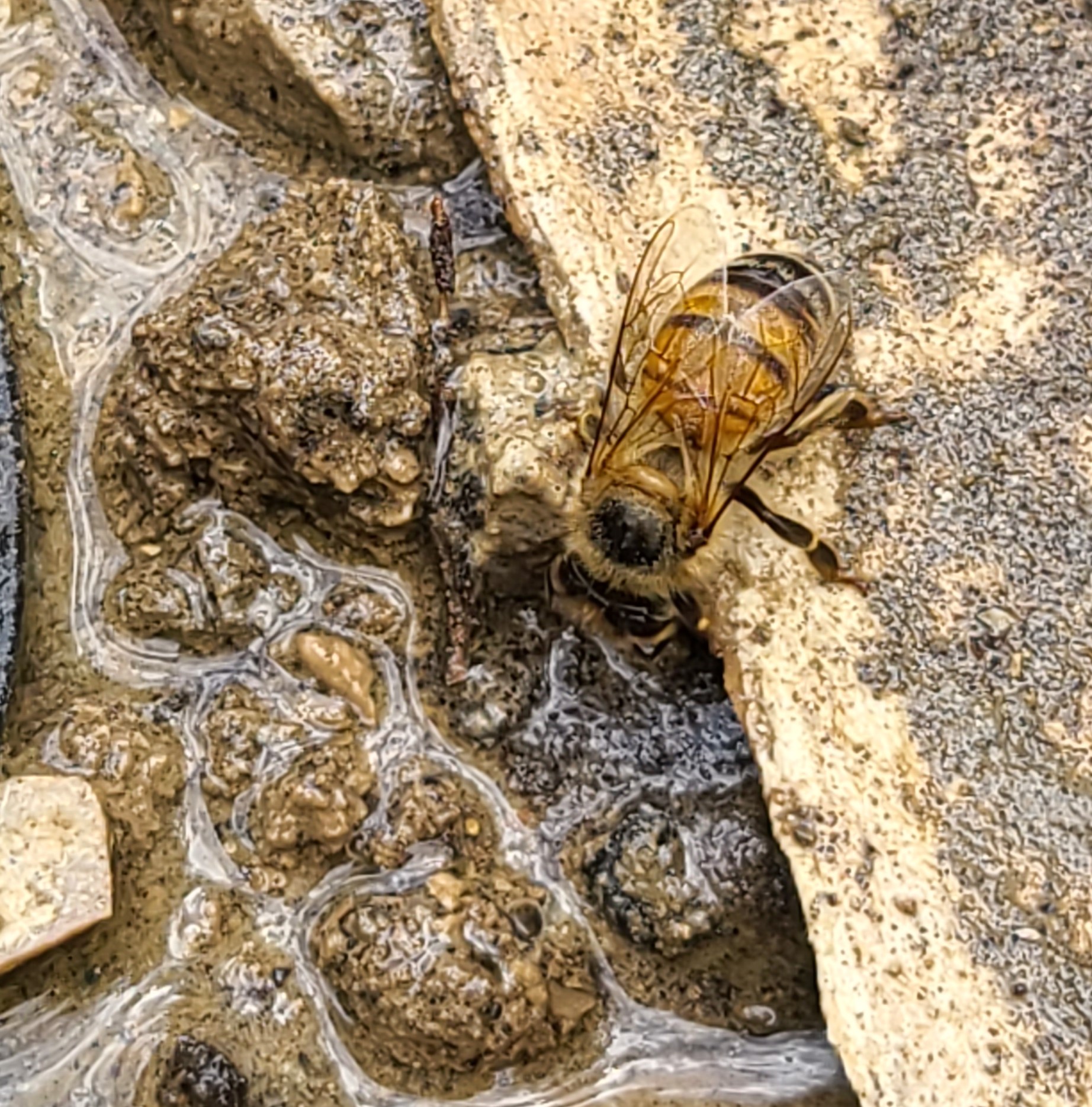

First, you should know that honeybees, the less aggressive cousins of wasps, have yellow and black stripes and thick, hairy bodies. They usually build their hives in trees. Honeybee hives have distinct honeycomb-shaped compartments and can vary in shape and size.
Keep in mind that honeybees have many beneficial qualities:
- They produce excess honey that people can harvest.
- They are chief pollinators for many types of plants.
- Their beeswax is used by humans in various ways.
- Other substances they produce have medicinal qualities.
Because honeybees are a protected species, if you have an unwanted beehive or swarm of bees in your yard, call a beekeeper who can remove them without harming them.
Paper (Umbrella) Wasps: What You’re Probably Seeing at Home
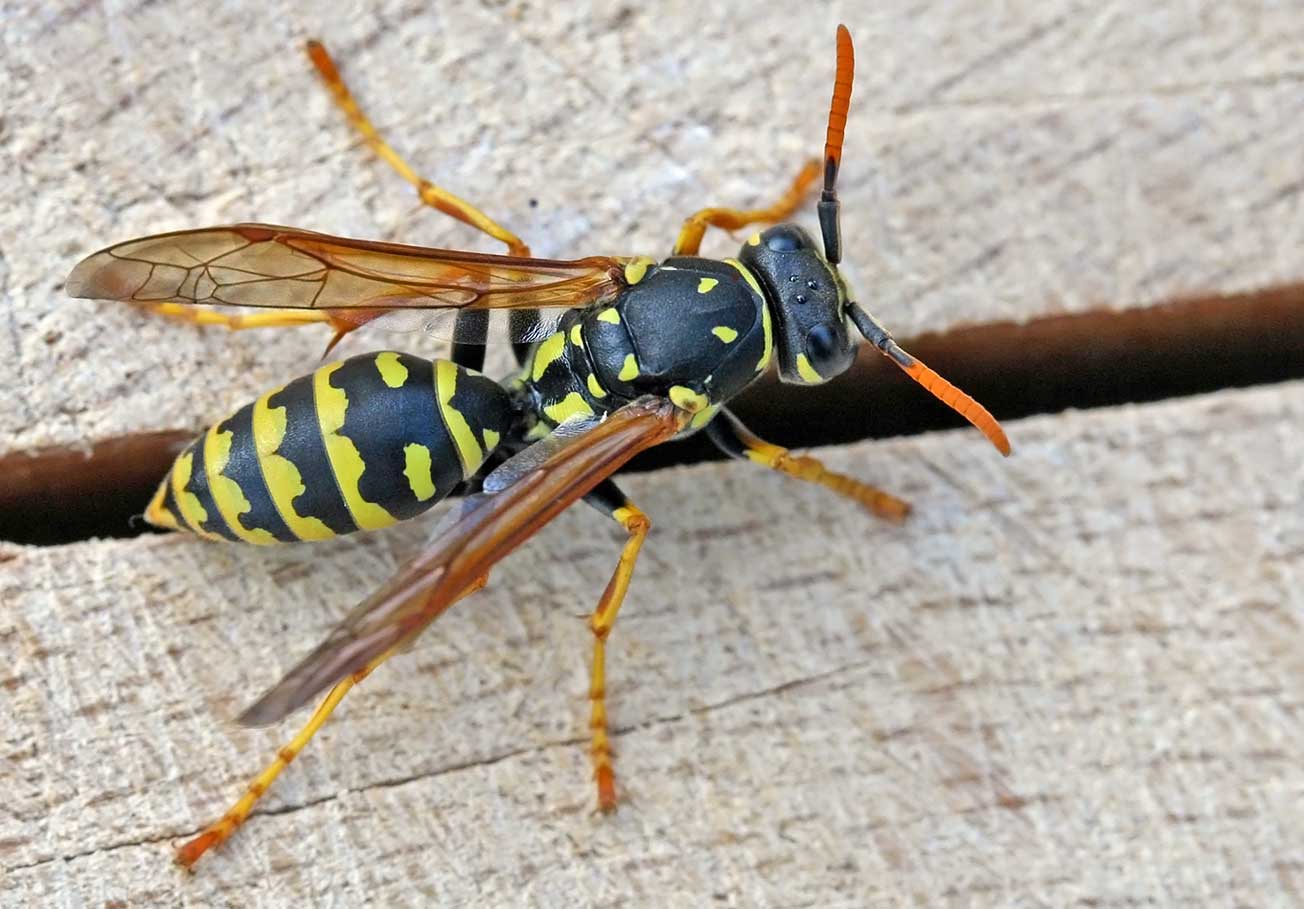

Many of the wasps you’ll see around your home are paper wasps. You’ll notice that paper wasps are skinnier than other types of wasps. They are practically hairless and have wavy black and yellow stripes with yellowish legs. Here are two distinguishing characteristics of paper wasps:
- Legs that hang down when they fly
- Long, thin bodies
This type of wasp is common in Utah. Paper wasps build nests that hang from fences, house corners, sheds, etc. Their nests look like upside-down umbrellas, so they are also called umbrella wasps.
Chances are, these are the wasps building nests on your house and in your shed. The good news is they are not overly aggressive and only sting when they feel threatened.
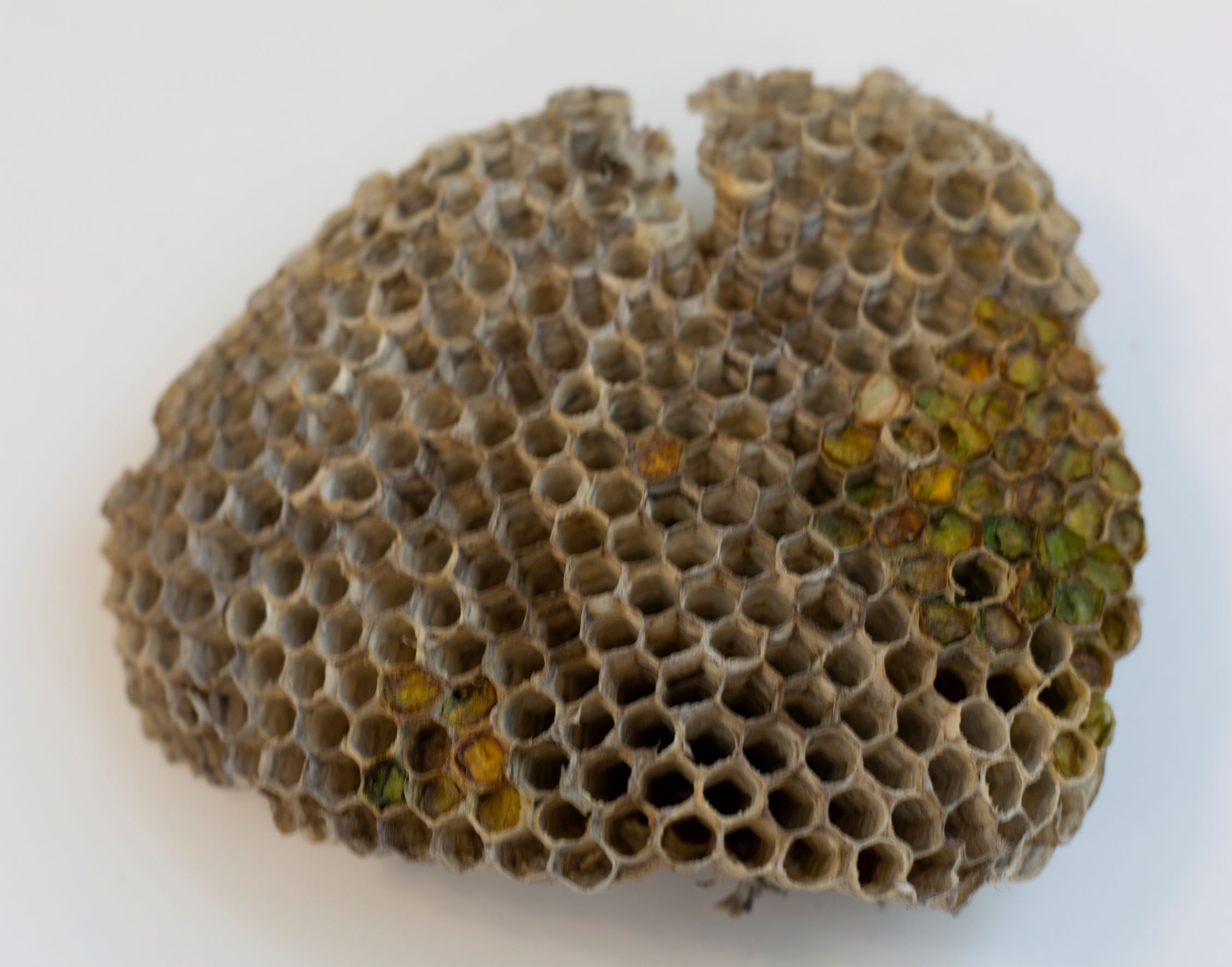

Wasp nests need to be sprayed with a pest control spray in order to get rid of them. If the nest is only knocked down, the wasps will simply rebuild it. Stewart’s pest control technicians usually do the following to get rid of wasps:
- Spray with an insect control spray
- Knock down and dispose of large nests
- Continue to periodically use pest control spray on areas where wasps like to build nests (to discourage them from rebuilding a nest there)
Bald-faced Hornets: Beware
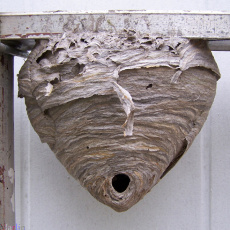

Living in Utah, you may never come across a bald-faced hornet nest, but if you do, take care. These hornets have black, hairless bodies and yellow-white faces. Bald-faced hornets are aggressive and highly territorial—they will sting anything that seems remotely threatening.
They usually make large nests high in trees or bushes and occasionally on building eaves. Their nests are made of paper-like fibers woven together with their saliva. Inside the paper shell are honeycomb-shaped structures made of the same material.
Bald-faced hornet nests should be professionally removed because they are so aggressive. To remove nests, professionals usually follow these steps:
- Wear protective clothing
- Go to the nest at night when the hornets are much less active
- Put insect control spray in the opening of the nest, sealing it closed
- Carefully remove the nest and dispose of it
Yellowjackets: Paper Wasps’ Aggressive Relative
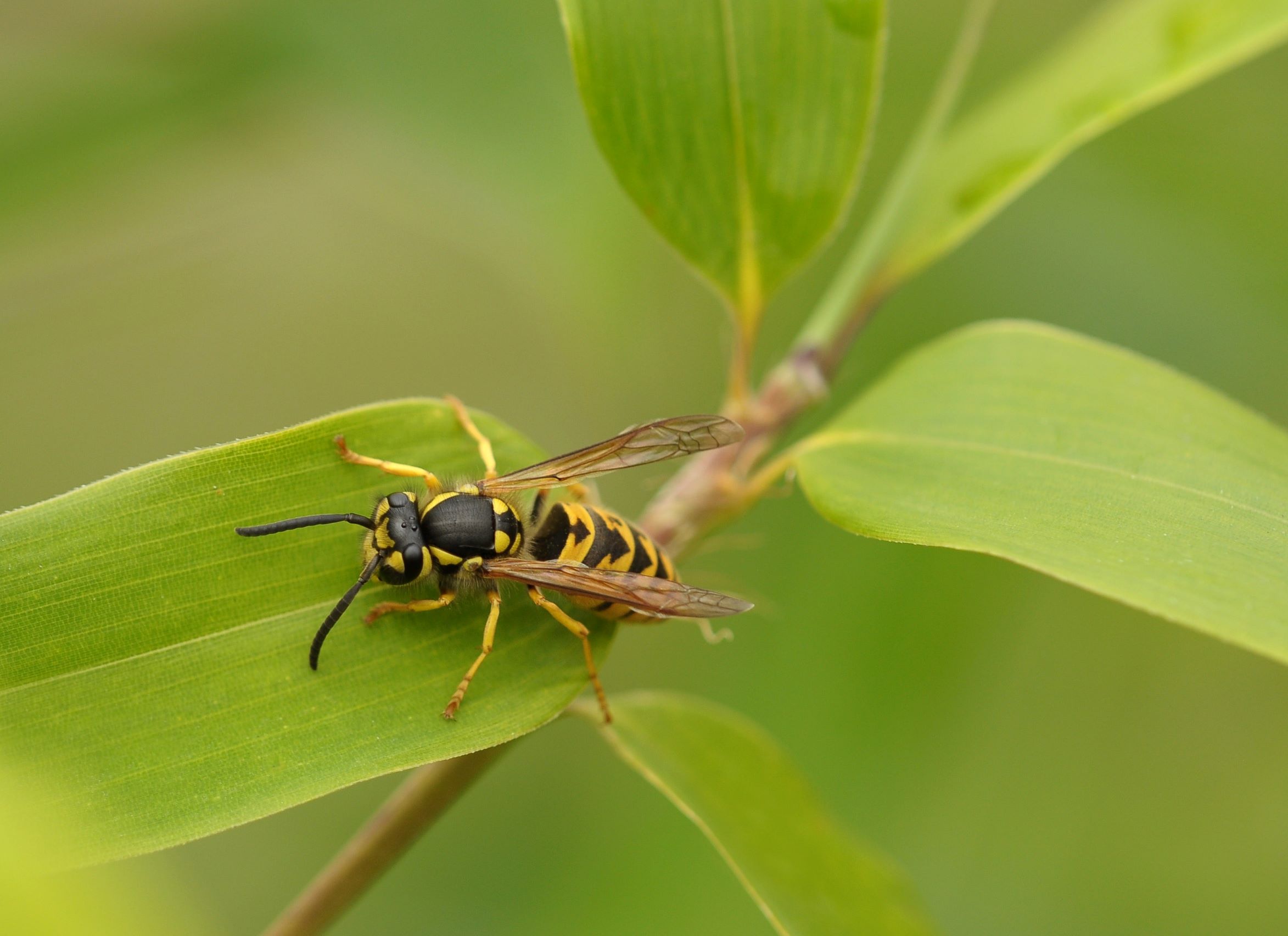

You’ve probably mistaken a yellowjacket for a paper wasp before. Yellowjackets look similar to paper wasps, but they have shorter, thicker bodies than their skinny relative. Yellowjackets also have more yellow on their bodies and lighter-colored wings.
This type of wasp can build nests both underground and in trees or bushes. Yellowjackets are more aggressive than paper wasps and slightly less aggressive than hornets, but still very territorial and willing to bite or sting when they feel threatened.
Stewart’s pest control technicians usually treat for yellowjacket and paper wasp nests the same way:
- Spray with an insect control spray
- Knock down and dispose of large nests
- Periodically use pest control spray on areas where wasps like to build nests
Preventing Yellowjackets, Paper Wasps, and Hornets
Paper wasps, yellowjackets, and hornets become active in the spring and stay active throughout summer. You’ve probably noticed that they are most active in the late summer (when colony numbers are highest) and in the fall. In autumn, the old queen starts to die, and the new, fertilized queens leave the nest to hibernate over the winter.
When this happens, the rest of the wasps in the colony are free to wander and scavenge until the weather gets too cold and they die. This is when you’ll start to see a lot of wasps around your picnics or barbecues, especially if you leave out your sweets—they love sweets and greasy foods.
Prevent yellowjackets, hornets, and paper wasps from building their nests on your property by doing the following:
- Quickly dispose of fruit that falls from trees
- Make sure all trash is bagged well (especially meat and sugary foods) and that the trash can lid is secured
- Fill in any holes in the yard to prevent yellowjackets from building underground nests
- Repair any holes or cracks on your home, garage, and shed
- Dispose of old wood, cardboard, paper, etc. (they can use these as building materials for their nests)
- Use Stewart’s Pest Control program to help create a barrier against insects
Do you want help getting rid of wasps and yellowjackets in your yard? Stewart’s Bug Barrier Program gets rid of wasps and other pests around the home and keeps them away. Call or text us today (801-226-2261) to learn more about our pest control programs and to get a free quote.



